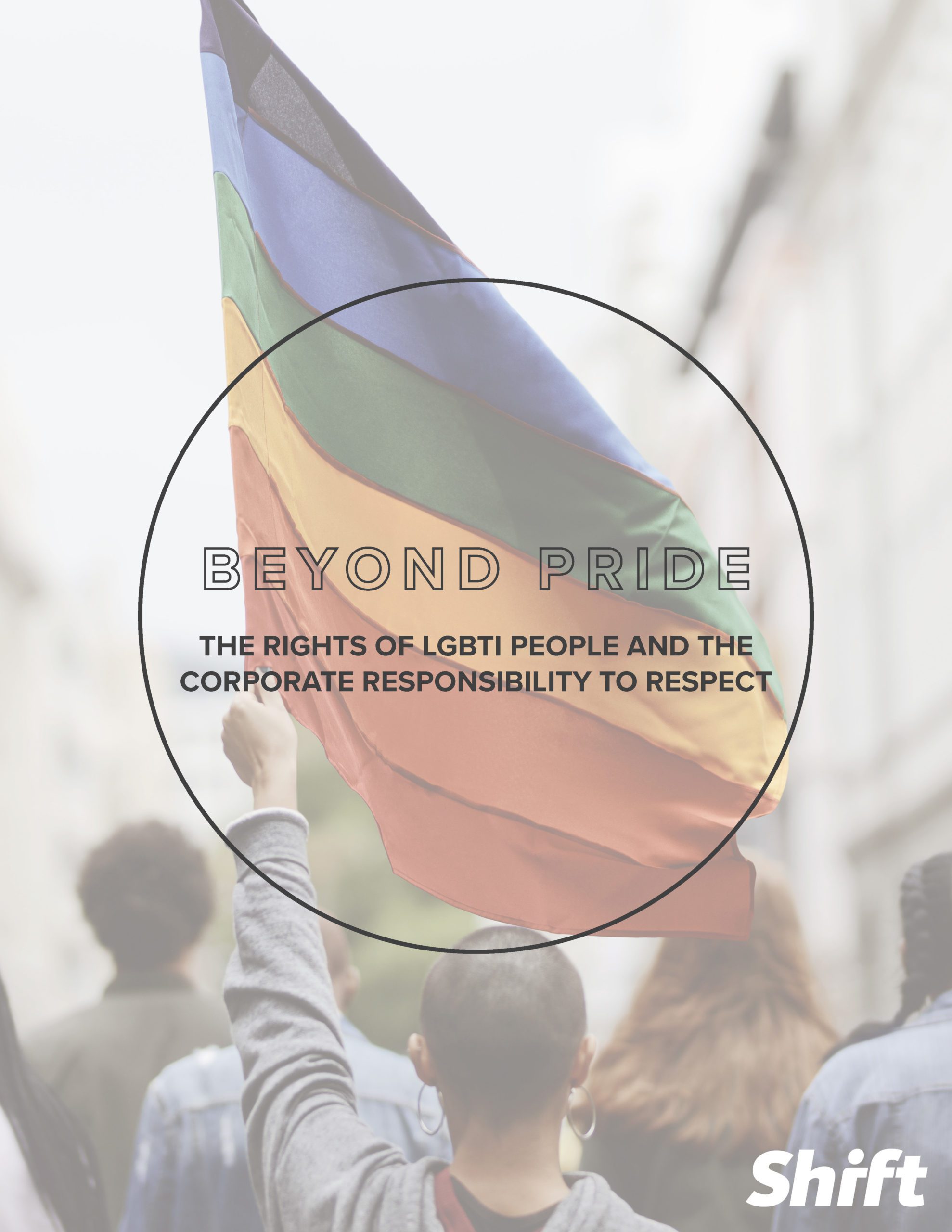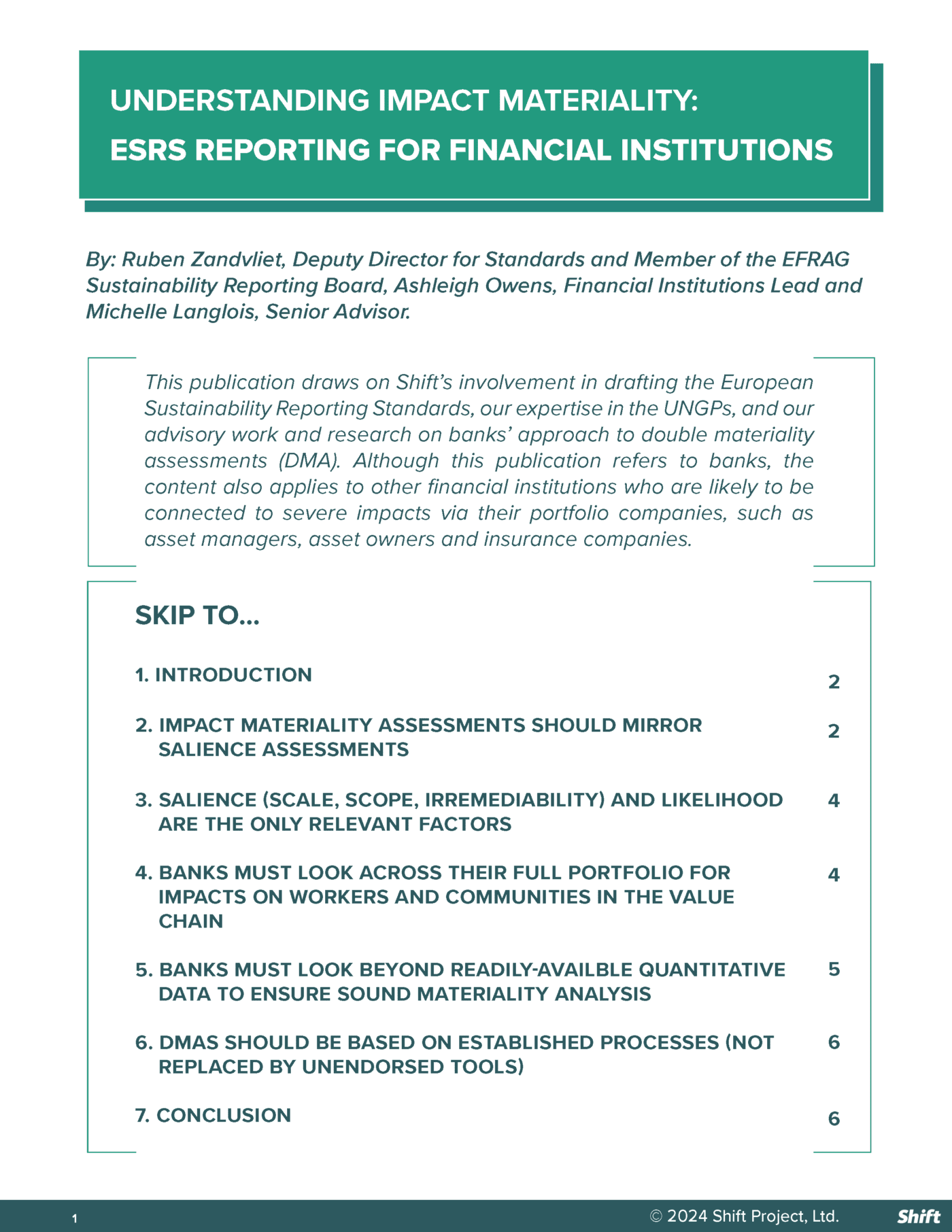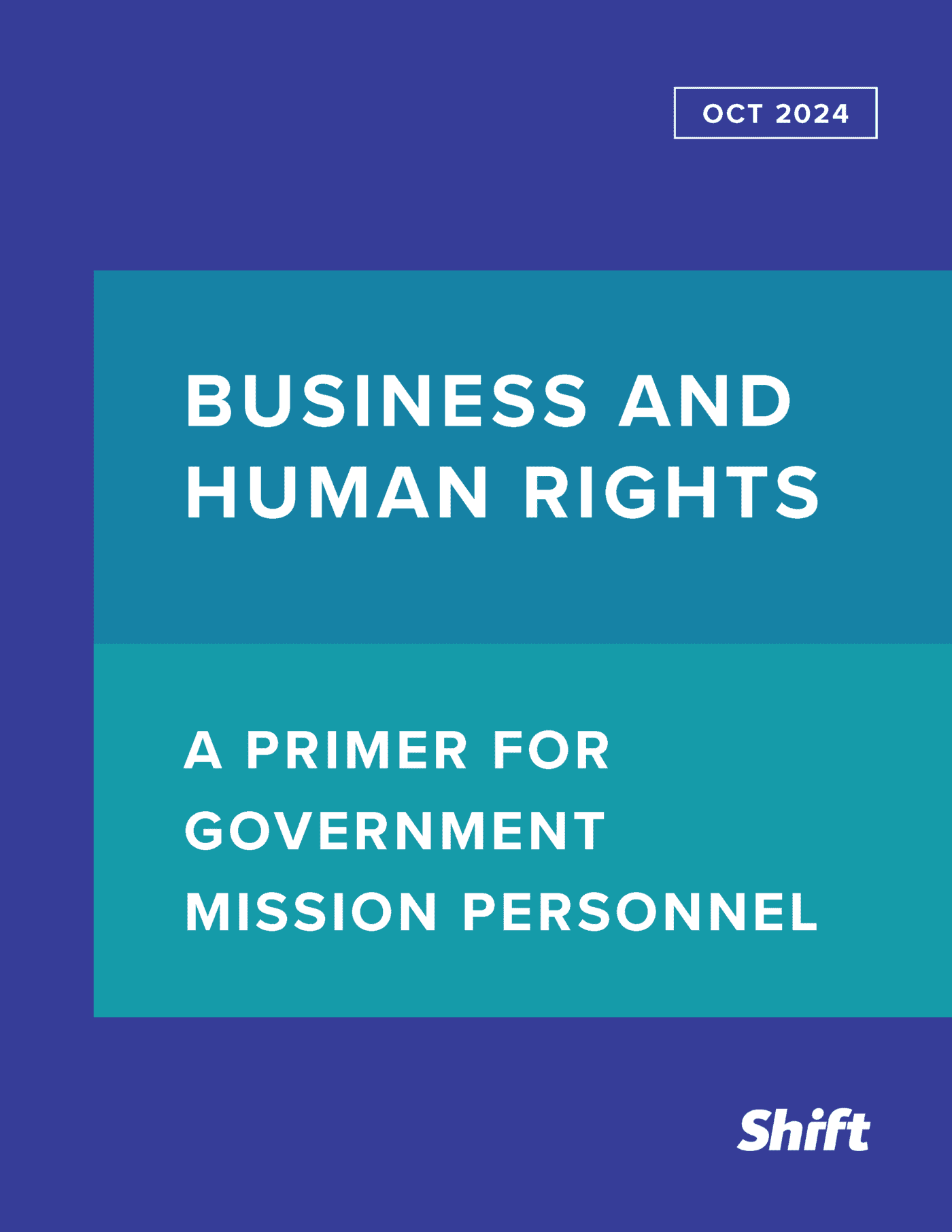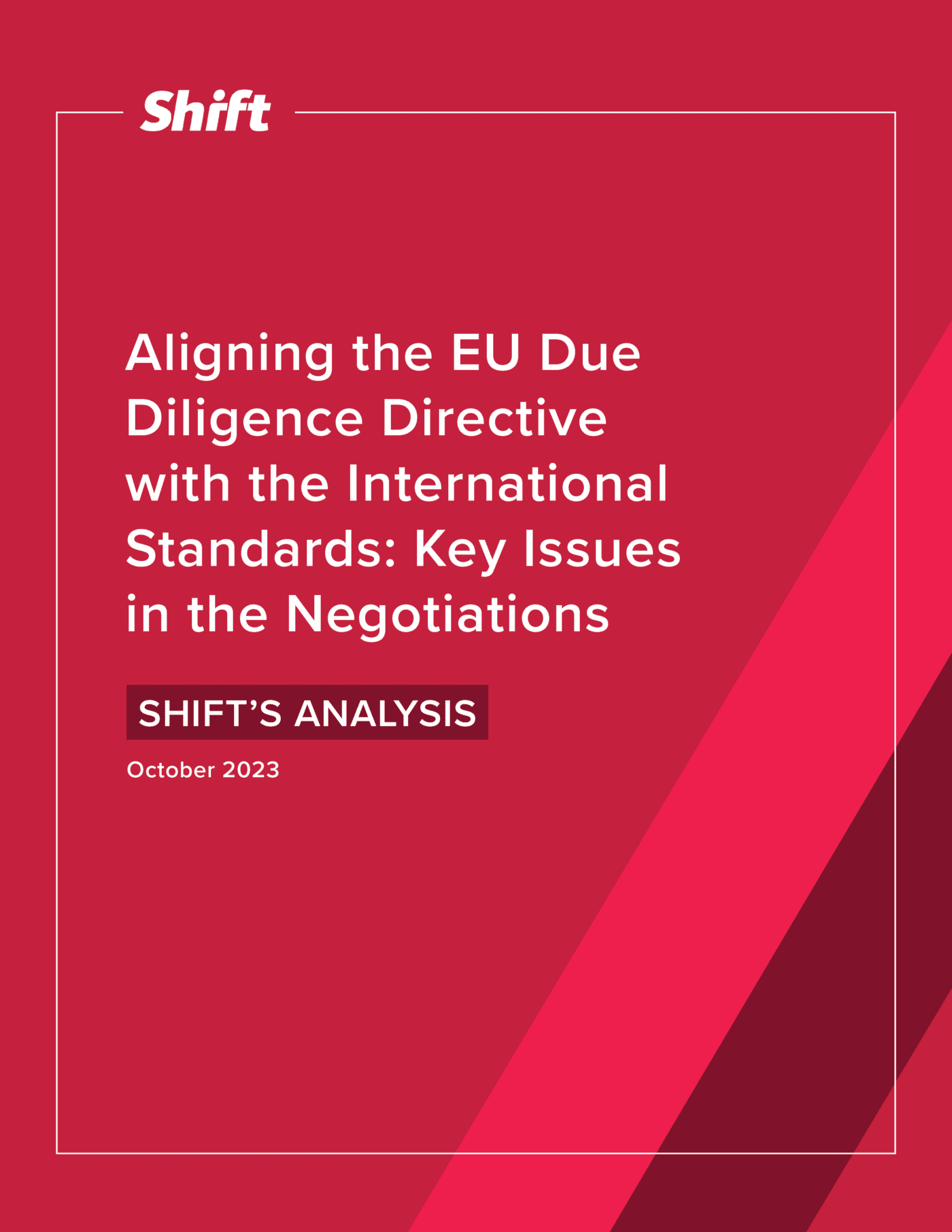In every region of the world lesbian, gay, bisexual, transgender and intersex (LGBTI) people face some degree of violence, persecution or discrimination.
From what is said around a family dinner table to who gets to compete in a sports contest; from who is welcome in a bathroom to who is sentenced in a court room; to forced sterilization and harmful medical procedures; and from who gets an apartment, job offer or promotion to who gets imprisoned, flogged or sentenced to death. The contexts for such violence and discrimination are as varied as the people in the LGBTI acronym, and pose a wide range of human rights risks for companies.
Businesses have a responsibility – under the UN Guiding Principles on Business and Human Rights (UNGPs) – to understand and address how their actions, decisions, omissions and business relationships can lead to negative impacts on people. In the case of LGBTI people, that means considering how they could be adding to the risk that they already face on the basis of their sexual orientation, gender identity or expression, or sex characteristics (SOGIESC).
Use this resource to:
- Learn how business activities and relationships can exacerbate risks faced by LGBTI people.
- Understand why risk can vary depending on geographical and cultural context, and what that means for global businesses.
- Explore how companies can understand the particular vulnerabilities experienced by LGBTI people to better identify risks and prioritize action.
- Review what companies are doing to address risks to the rights of LGBTI people, and where the gaps are in existing practice.
- Consider meaningful ways in which companies can engage with LGBTI stakeholders and use their leverage with peers, partners, suppliers, governments and others




